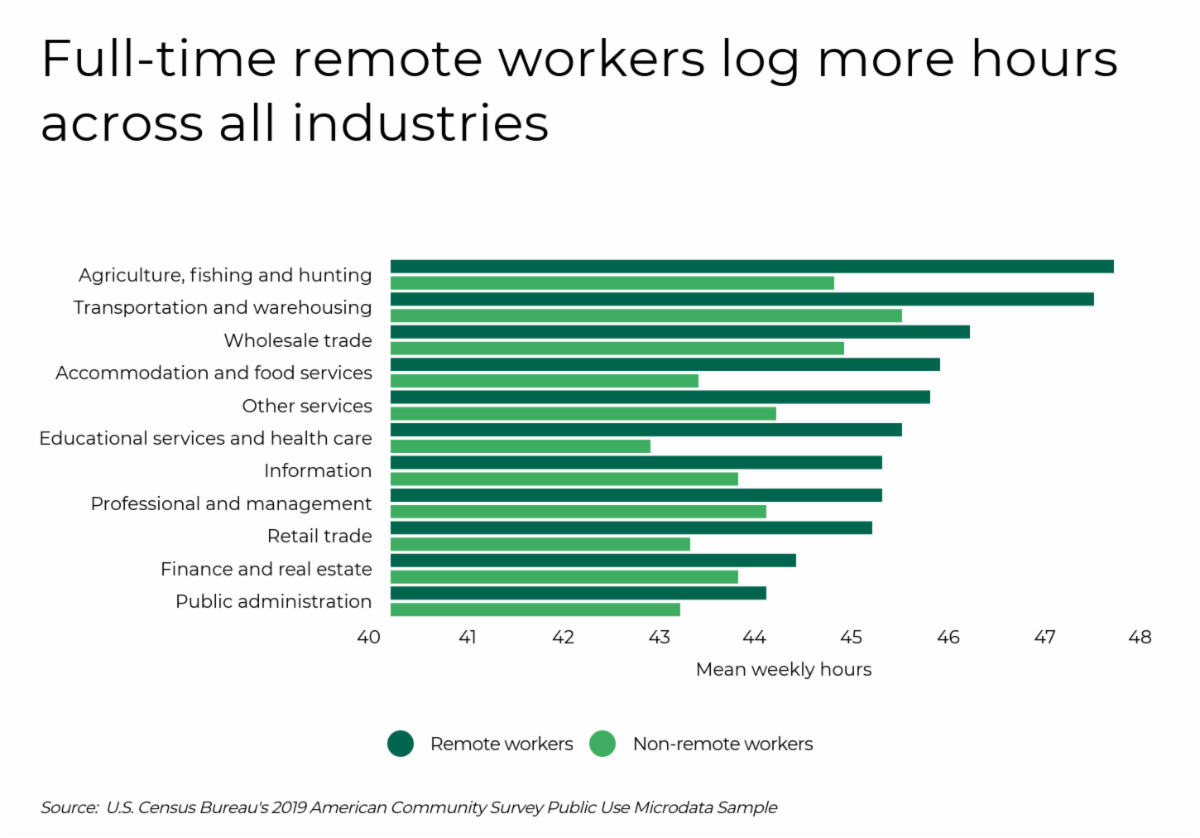Nashville, TN The COVID-19 pandemic has prompted a historic shift in how much people work from home. But now that a majority of eligible Americans are at least partially vaccinated, many businesses are planning how to bring workers back to the office safely and whether to continue allowing for remote work. Data collected over the past year shows that workers are just as productive—if not more—at home, and they tend to work longer hours. Interestingly, this phenomenon isn’t unique to the pandemic; Census Bureau data shows that full-time remote workers logged almost two additional hours per week, on average, than non-remote workers in 2019.The most recent data on work hours from the Census Bureau reveals that part-time remote workers worked less, on average, than their non-remote counterparts, at 19.3 hours per week compared to 21.5 weekly hours. However, full-time remote workers worked an average of 45.6 hours per week, compared to an average 43.8 hours for non-remote full-time workers. Overall, remote workers were less likely to work full-time in 2019, as approximately two-thirds of remote workers were full-time, compared to 73% of non-remote workers.
- Small metros: 100,000–349,999
- Midsize metros: 350,000–999,999
- Large metros: 1,000,000 or more
The analysis found that in the Nashville metro area, full-time remote workers average 45.5 work hours per week, compared to 44.1 hours for non-remote workers, which amounts to 1.5 more hours per week. Here is a summary of the data for the Nashville-Davidson–Murfreesboro–Franklin, TN metro area:
- Difference in hours between full-time remote & non-remote workers: 1.5
- Average weekly hours for full-time remote workers: 45.5
- Average weekly hours for full-time non-remote workers: 44.1
- Percentage of remote workers who work full-time: 70.5%
- Percentage of non-remote workers who work full-time: 74.2%
For reference, here are the statistics for the entire United States:
- Difference in hours between full-time remote & non-remote workers: 1.8
- Average weekly hours for full-time remote workers: 45.6
- Average weekly hours for full-time non-remote workers: 43.8
- Percentage of remote workers who work full-time: 66.7%
- Percentage of non-remote workers who work full-time: 72.8%





